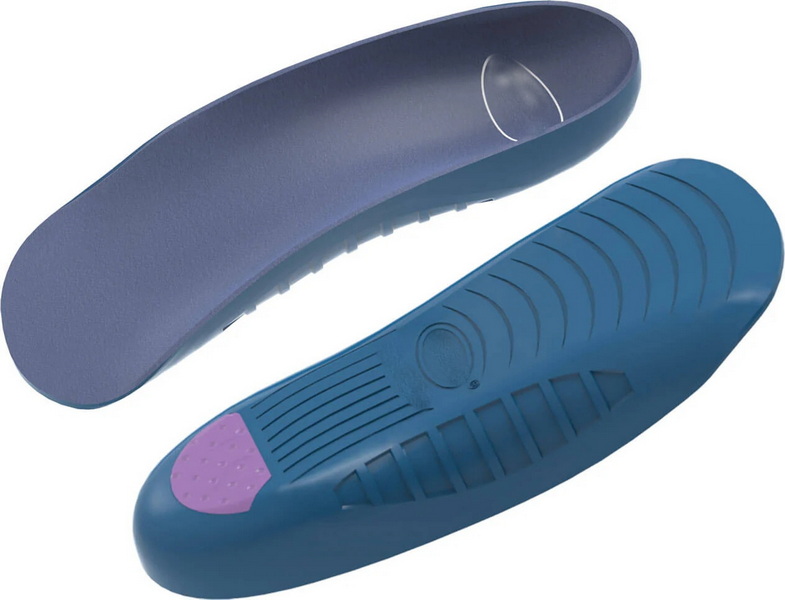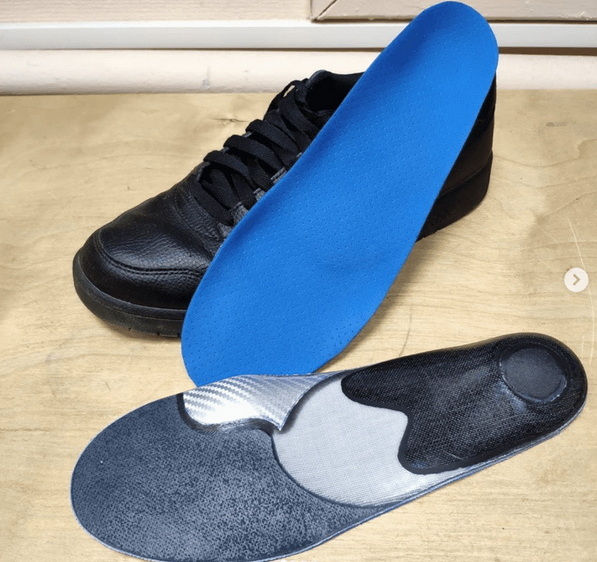Views: 222 Author: Edvo Publish Time: 2025-10-21 Origin: Site











Content Menu
>> What Are Commercial Shoe Inserts?
● Material Comparison: EVA, PU, and Beyond
● Functional Differences Between Shoe Inserts and Orthotics
● OEM and ODM Manufacturing Advantages in China
>> Sports and Athletic Insoles
● Biomechanical Insight: Support vs. Correction
● Price, Lifespan, and Accessibility
● How Modern Technology Bridges the Gap
● Choosing the Right Insole Type
>> When to Choose Commercial Inserts
● FAQs
>> 1. What is the main difference between a commercial shoe insert and an orthotic?
>> 2. Are commercial insoles useful for people with flat feet?
>> 3. How long should I keep my insoles before replacing them?
>> 4. Do Chinese OEM factories support private-label or custom packaging?
>> 5. Are commercial insoles suitable for professional athletes?
Finding the right insole can dramatically improve foot comfort, prevent injuries, and enhance posture. But for consumers choosing between commercial shoe inserts and custom orthotics, the difference is often confusing. Both promise better support and comfort—but are mass-produced orthotics inserts truly comparable to medical-grade orthotics? This article explores their differences in design, material, biomechanics, and performance while showing how advanced OEM manufacturers in China are redefining insole quality standards for global brands.

Commercial shoe inserts, also known as insoles or comfort pads, are pre-manufactured components that fit inside a shoe to provide extra comfort, cushioning, and light support. They are mass-produced in different standard sizes such as S, M, L, or XL, and can be easily replaced or adjusted by consumers. These inserts target common discomforts—like heel pain, arch fatigue, or forefoot pressure—that arise from standing, walking, or running for long hours.
High-quality commercial insoles often feature EVA foam, PU (polyurethane), silicone gel, or memory foam materials. These combine cushioning, elasticity, and breathability to create an affordable yet effective foot support solution. In recent years, Chinese EVA insole manufacturers have become leaders in global OEM and ODM production, offering customized materials, densities, and ergonomic designs to meet the standards of international footwear brands.
Orthotics represent the medical side of foot care. Prescribed by podiatrists or orthopedic specialists, orthotics are custom-fitted devices molded to a patient's unique foot structure. They address biomechanical imbalances such as overpronation, supination, plantar fasciitis, or heel spurs. Through personalized design and high-precision manufacturing, orthotics provide targeted correction, redistributing pressure and aligning feet with the natural gait cycle.
Orthotics usually cost significantly more because they are made after detailed biomechanical assessments, including gait analyses and 3D scans. They involve medical-grade materials that maintain structural integrity and precise correction for years.
The difference between inserts and orthotics extends deeply into their materials.
EVA (Ethylene Vinyl Acetate) is the most popular base material for both commercial and semi-custom insoles. It is flexible, shock-absorbent, and lightweight—ideal for reducing impact during walking and running. The foam density can be modified to create more firmness for sports or extra softness for comfort footwear. EVA also offers water resistance, easy moldability, and consistent compression recovery, which make it a manufacturer's favorite material for large-scale insole production.
PU (polyurethane) insoles are more resilient and supportive compared to EVA. They provide durable energy return and handle heavier body weight without flattening quickly. Gel inserts, on the other hand, feature liquid or silicone-based cushioning zones that adapt dynamically to each step. This softens pressure points, making them excellent choices for diabetics or people standing long hours at work.
Medical orthotics are often composed of layered materials with distinct properties. Polypropylene shells or carbon fiber reinforcements provide stability and structure, while EVA or cork layers add cushioning and contouring. Some orthotics are also lined with antibacterial fabrics like microfiber or natural leather for long-term wear comfort.
By comparison, commercial inserts generally use fewer layers and simpler molds—but advanced OEM factories in China have started producing hybrid insoles combining EVA bases with TPU arch supports and breathable mesh covers. These innovations have substantially improved performance and made mass-produced insoles more orthotic-like than ever before.
| Feature | Commercial Shoe Inserts | Custom Orthotics |
|---|---|---|
| Fit | Standardized universal sizes | Individually molded from foot shape |
| Purpose | Comfort, shock absorption | Biomechanical alignment and medical correction |
| Cost | Affordable and widely available | Expensive, prescription-only |
| Lifespan | 6–12 months on average | 2–5 years with maintenance |
| Customization | Available via OEM/ODM production | Guided by medical professionals only |
| Common Use | Sports, casual, and work shoes | Therapeutic and post-rehabilitation footwear |
Most commercial inserts address comfort and fatigue but do not correct structural misalignments. Orthotics, meanwhile, function as medical equipment that repositions the foot to reduce strain and pain caused by abnormalities in movement or bone alignment.
That said, innovations in the insole industry have blurred the line between comfort accessories and corrective tools. Premium commercial insoles featuring contoured footbeds, motion-control zones, and variable-density foams now deliver near-orthotic performance for consumers without medical conditions.
Today's best commercial shoe inserts are often born from China's advanced OEM ecosystem. Chinese insole manufacturers have integrated computer-aided design (CAD) and automated molding to deliver both large-volume production and ergonomic precision.
Key manufacturing strengths include:
- Digital mold development and adjustment based on anatomical data
- Multi-layer lamination of EVA and PU materials for specific performance goals
- Automatic cutting and contour-shaping machinery for consistent sizing
- Heat-molded memory foam that adapts to user weight
- Customized hardness and rebound adjustment according to brand preference
For global footwear brands, partnering with a Chinese OEM factory allows flexible customization without the large expenses typically associated with orthotic manufacturing. From custom logos and packaging to patented gel-zone technology, foreign buyers can private-label products that rival branded orthotic insoles in quality and aesthetics.

Perfect for casual users, these insoles enhance general foot comfort and relieve mild feet or leg strain. They're ideal for teachers, nurses, or workers who spend most of the day on their feet. Their affordability makes them easily replaceable and practical for routine wear.
Runners, hikers, and athletes benefit from sport-specific insoles with stronger arch support and cushioning. Many contain shock-absorbent heels, flexible forefeet, and ventilation channels for sweat control. Such OEM products are among the most exported items from China's sportswear supply chain.
These are semi-orthotic insoles designed to support those with mild conditions like plantar fasciitis or collapsed arches. Though not medical prescriptions, they integrate modified arch curvature and metatarsal padding that mimic orthotic support for minor imbalances.
Commercial inserts provide general stability and absorb impact forces, reducing muscle fatigue. They improve comfort but don't actively alter gait deficits or deformities. Orthotics, in contrast, aim to correct biomechanical problems such as overpronation or high arches by controlling motion and redistributing pressure precisely.
However, the evolution of ergonomic engineering and material science has led to semi-custom inserts featuring:
- Adjustable arch modules
- Thermo-moldable EVA bases
- Heel stabilizers for pronation control
- Deep-cup contours to anchor the rear foot
These innovations narrow the performance gap. Many consumers now find commercial insole comfort sufficiently close to orthotics for non-medical routines.
Orthotics can range from $300 to $700 or more and require expert fitting. Commercial insoles, by comparison, typically cost between $20 and $100, offering an economical solution for most lifestyles. Durability varies depending on frequency of use and body weight, but newer materials prolong lifespan and retain cushioning for up to one year.
For brand owners, sourcing directly from an EVA insole manufacturer enables:
- Lower production costs
- Tailored density and fabric configurations
- Branded packaging with low MOQ (Minimum Order Quantity)
- Compliance with international safety and environmental standards
This manufacturing flexibility allows international retailers to penetrate local footcare markets with customized comfort insoles that deliver performance levels approaching clinical-grade products.
Advances in automation, bionic design, and digital analysis have brought commercial insert production closer than ever to orthotic-level performance:
- 3D scanning and CAD prototyping help design anatomically curved insoles for mass markets.
- Pressure-mapping simulations optimize foam density and energy return for multiple shoe types.
- Antibacterial textiles and moisture-control linings improve hygiene and durability.
These manufacturing techniques, combined with China's scalable production capacity, make premium shoe inserts more intelligent, durable, and comfortable. As technology continues to evolve, the distinction between supportive insole and orthotic device will further blur.
- You experience occasional foot fatigue, soreness, or discomfort
- You play sports or stand for long hours
- You want to upgrade shoe comfort without a medical prescription
- You're seeking affordable relief for everyday use
- You have chronic pain or diagnosed foot deformity
- You're undergoing physical therapy or rehabilitation
- You need gait correction customized to body mechanics
For most users, commercial inserts offer nearly orthotic-level comfort at a fraction of the cost. However, those with diabetes, neuropathy, or specific skeletal issues should still consult medical professionals for personalized orthotic solutions.
OEM partnerships with Chinese insole factories empower global companies to bring advanced comfort solutions to diverse markets. With expertise in mold-making, sustainable materials, and ergonomic testing, these manufacturers allow brands to offer quality comparable to $300 orthotics—yet retail at consumer-friendly prices.
Additional advantages include:
- Rapid prototyping and design confidentiality
- Multi-region sizing and packaging localization
- Long-term supply chain stability
- Custom logo embossing for brand differentiation
This synergy between manufacturers and global brands has transformed the comfort insole industry into a high-value segment combining science, sustainability, and affordability.
Commercial shoe inserts may not fully replicate the medical precision of orthotics, but the difference is shrinking fast. With innovations in EVA foam technology, multimaterial structures, and foot-pressure distribution engineering, today's OEM-produced inserts provide exceptional comfort, alignment, and performance for most daily users.
For people with specialized medical conditions, orthotics remain the gold standard. Yet for general consumers and brands looking to deliver comfort at scale, high-quality commercial insoles from Chinese OEM manufacturers represent the ideal solution—economical, effective, and evolving toward medical-grade excellence.

Commercial inserts are designed for comfort and shock absorption, while orthotics are custom-made medical devices created to correct structural or biomechanical problems.
Yes. High-quality insoles designed with extra arch support and firm midsoles can ease flat-foot pain, though severe cases may still require custom orthotics.
Most commercial insoles last six to twelve months depending on activity level, while orthotics can function effectively for two to five years with proper care.
Absolutely. Many professional manufacturers provide OEM and ODM services with personalized design, logo printing, and packaging solutions for global customers.
Yes. Sports-grade insoles combining EVA, TPU, and gel are widely used by athletes to enhance comfort, reduce fatigue, and prevent impact-related injuries.